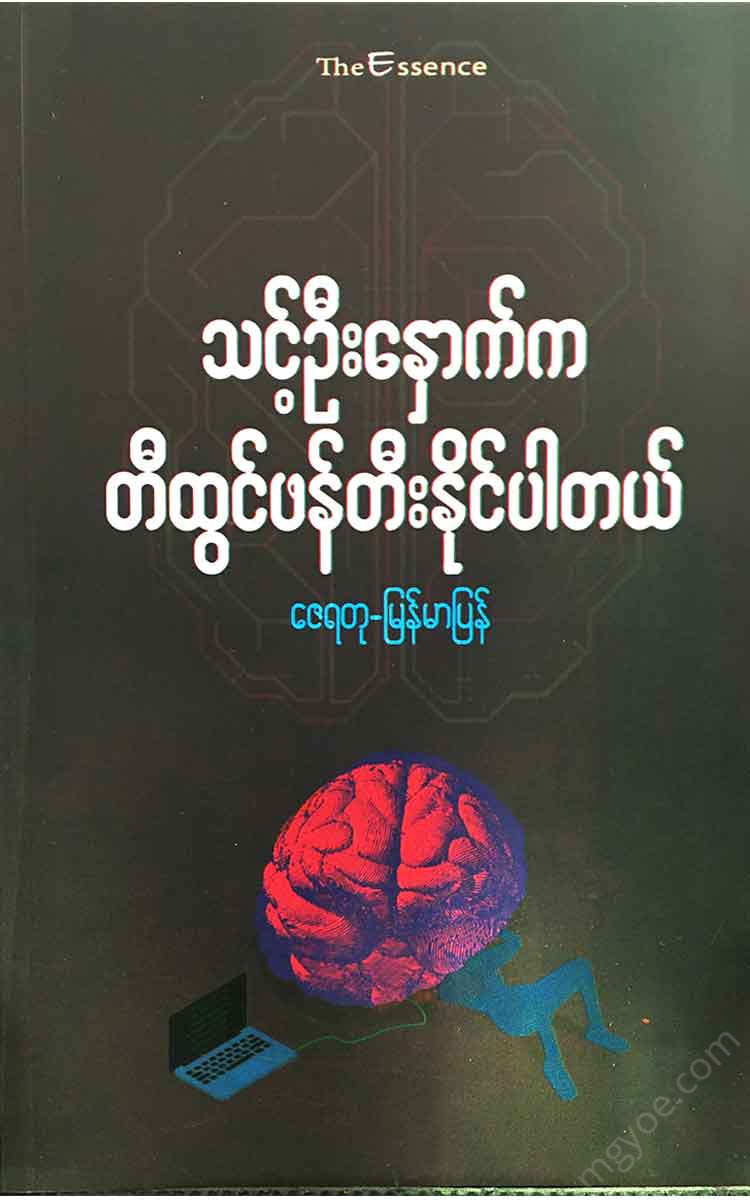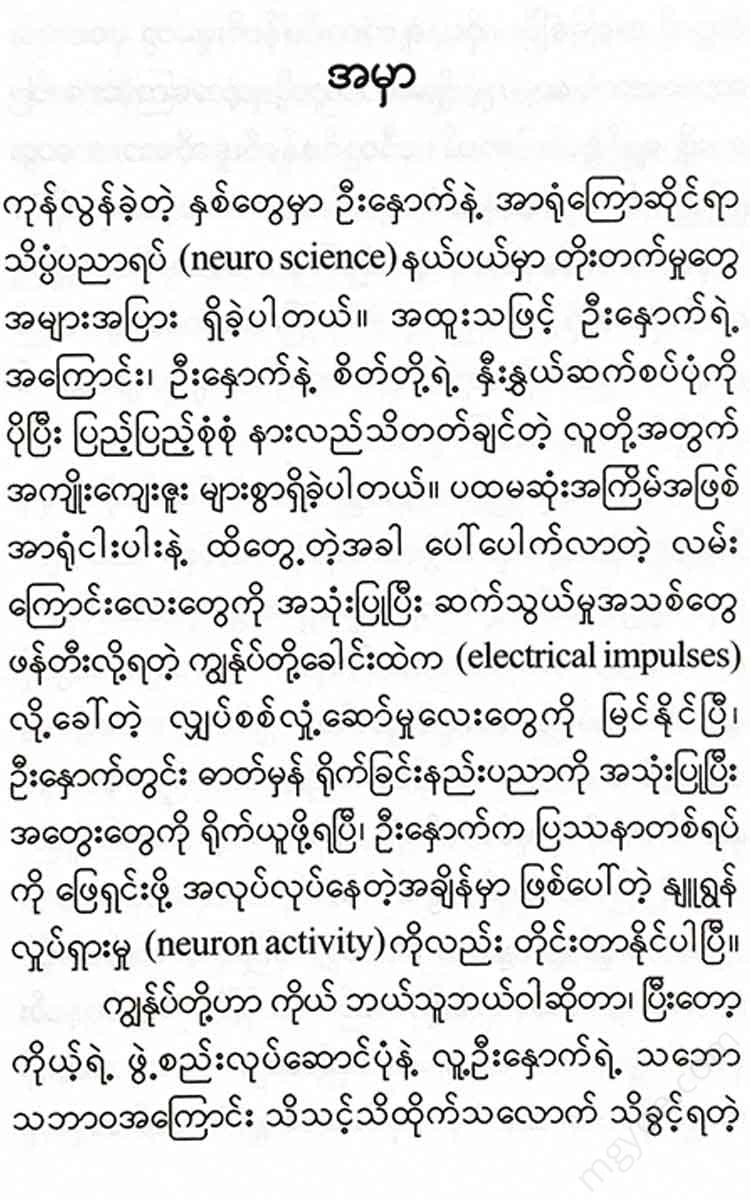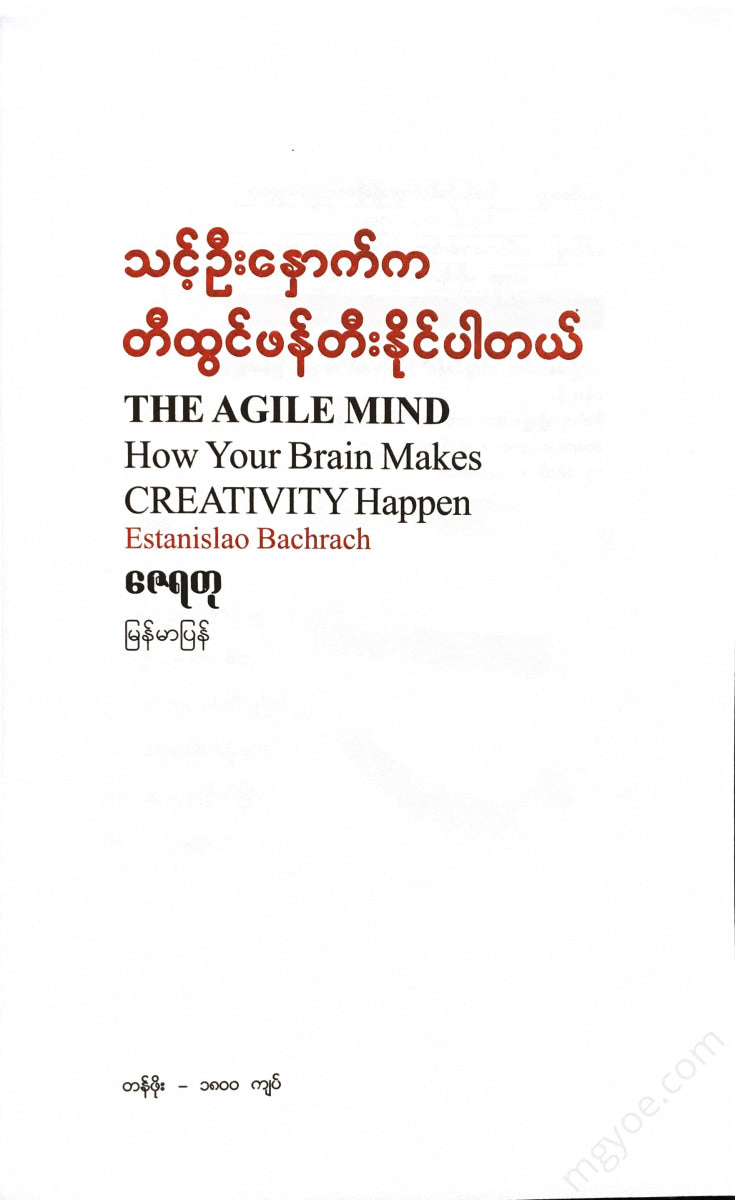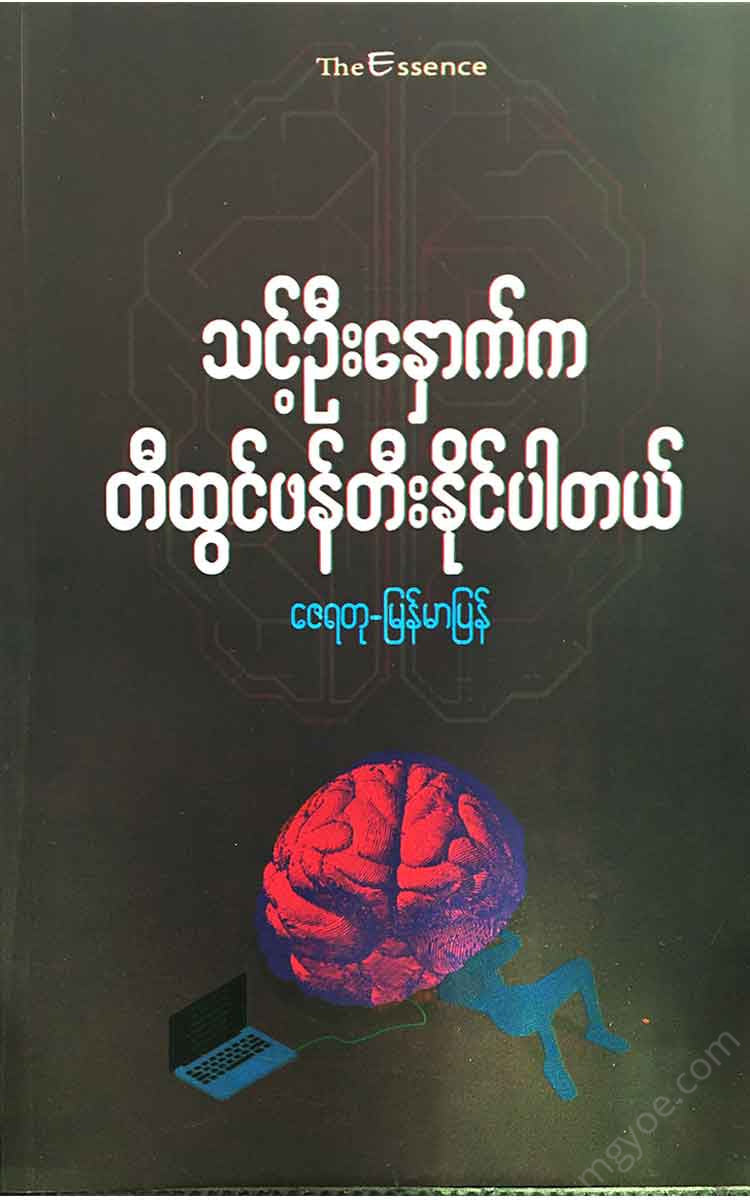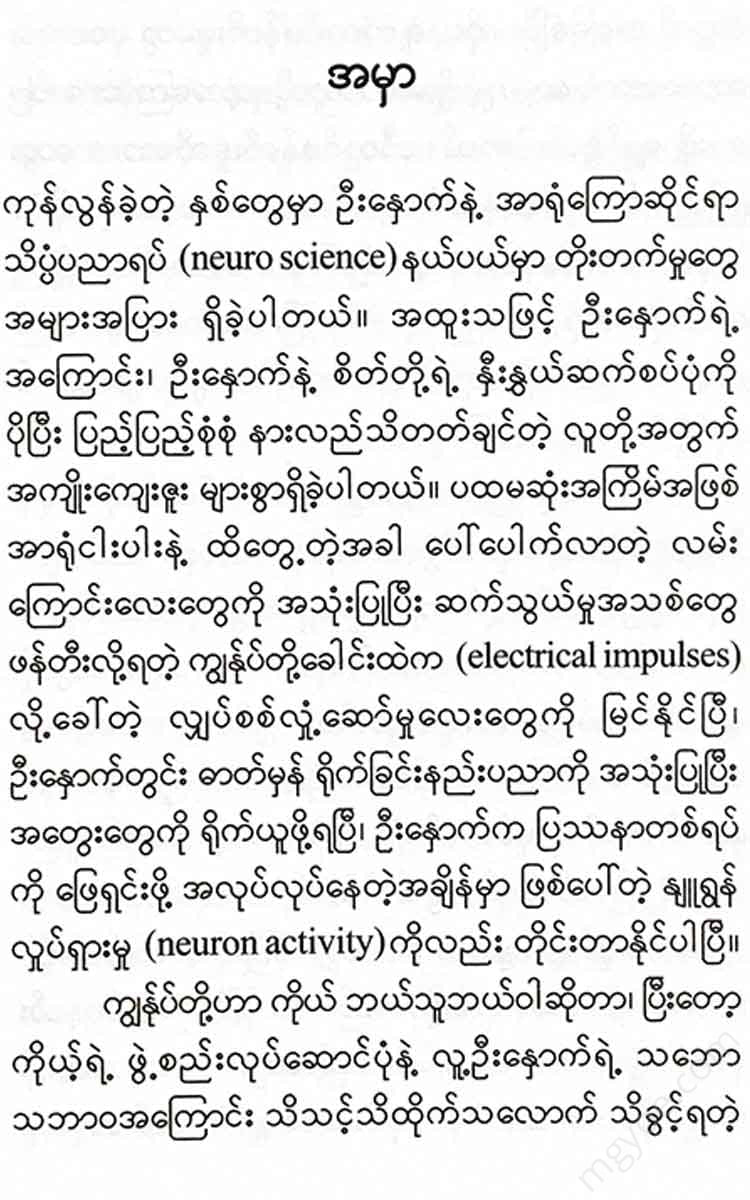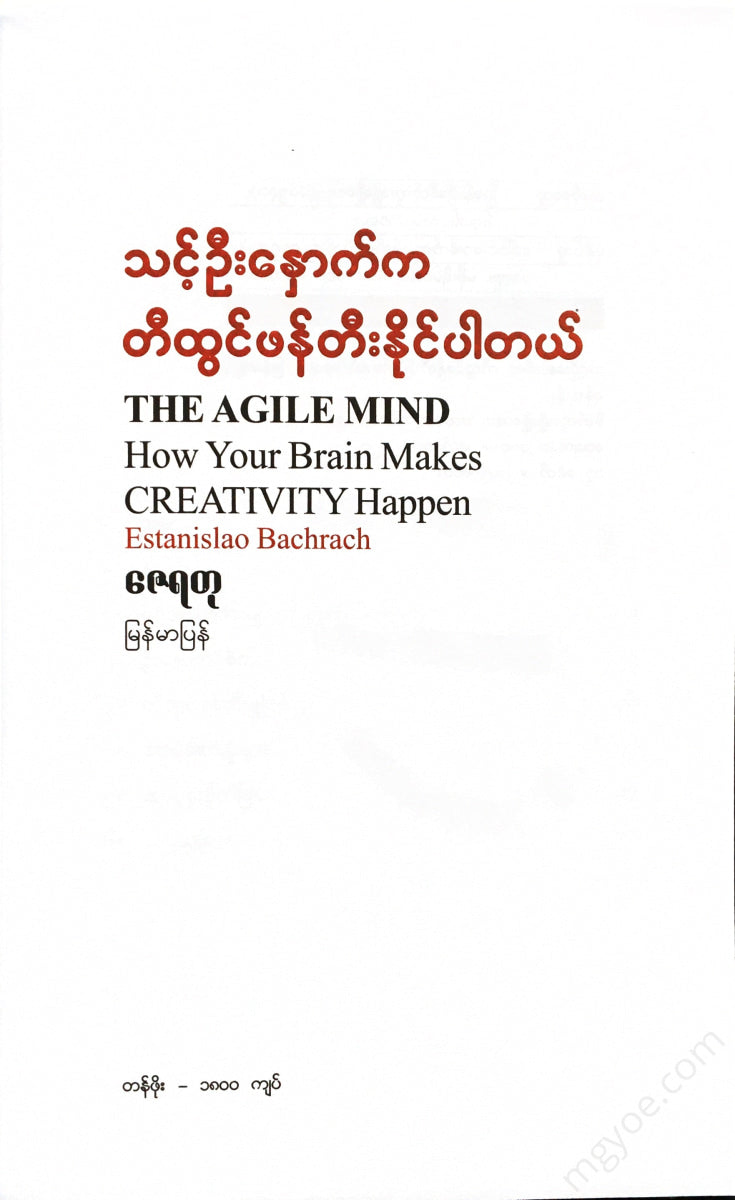စိတ်ကူးချိုချိုစာပေ
Zeratul - Your brain can create.
Zeratul - Your brain can create.
Couldn't load pickup availability
( 1 )
Breaking old patterns
Genes and replicating cultures
You can change your mind, no matter who you are. It’s up to you. You can improve your creativity, no matter what others think of you. Neuroscience has shown us that the brain can learn and change as long as it is not damaged. This ability is called neuroplasticity. This means that regardless of previous experiences or genetic predisposition, our minds (the way we use our thoughts) can change the structure of our brains. When you start reading this book, your brain will be on a single path with a network of thoughts. By the time you finish reading it, your brain will have changed with new networks and new pathways. You need to know what your brain is capable of and where its limits are, so you can have a better brain.
How did we get to where we are today? We are still here on Earth because of two constant processes: biological evolution and cultural evolution. We have evolved biologically through mutations in our genes. These mutations that help us survive in our environment are then selected for by a process called natural selection, which is beyond our knowledge (or control). In the area of culture, our creativity plays a major role. It has led to major changes in our cultural norms that are completely unnoticeable.
So we can think of creativity as the cultural convergence of mutations that led to our evolution.
Our nervous system evolved through evolution. In this system, the discovery of new things, which is essential for the development of creativity, stimulates the pleasure centers of the brain. For example, some people have evolved to be more motivated by food (or sex), while others have evolved to be more motivated by learning new things. But this tendency to seek out and explore new things is not solely a matter of genes, but is also influenced by childhood experiences. If this is true, our ancestors, who recognized the importance of innovation, would have learned from the creators of innovations that better prepared them to face threats and unforeseen circumstances in their lives, and protected them.
In addition, a much older and more powerful force than creativity plays a crucial role in human survival. It is “entropy,” which means the conservation of our energy. Basically, when there are no external demands on us, we conserve energy. This is where entropy comes into play in controlling our minds and bodies. Our need to conserve energy is so great that we often find time to relax and unwind in our free time. Take a walk in the park, watch a movie, read a book, or plant a tree. It’s not about wasting energy, but rather about switching to an automatic mode. What this means is that our brains are pulling two opposing strings. On one hand, we use the least amount of effort necessary (entropy). On the other, we explore new things (creativity).
Entropy seems to appeal to most of us more than the joy of discovering new challenges and ideas. But it's a good thing that some people are willing to take advantage of the benefits of discovery. Whichever of these two directions you choose, creativity is always satisfying and brings us joy, no matter what stage of life you find yourself in.
In short, we are born with two opposing instincts. On the one hand, we are naturally inclined to conserve our energy. On the other hand, we have a strong desire to explore and take risks. It is a curiosity that all children have. The second instinct is to be creative. While both are necessary, the first is not achieved without much effort, enthusiasm, and encouragement. The second, creativity, is difficult to cultivate alone. As we grow older, opportunities for exploration in the workplace and in our daily lives become fewer. There are many things that prevent us from taking risks and exploring. And then the desire to be creative quickly fades. This is a major reason why we think we are not creative.
Genes are passed down from generation to generation automatically. But ideas and inventions are not. Every child learns how to handle fire, how to ride a bike, what nuclear power is. This information that we learn in order to adapt to our culture is known as 'memes'. This term was coined by Richard Dawkins in his book The Selfish Cuene. We need to pass on the values of memes, from language and numbers to theories and laws, to our children so that they don't forget them. So, in cultural terms, memes are like genes .
For a very creative person , it's possible to change a meme. If enough people believe that this change will lead to progress for society, it becomes a new part of the culture. New songs, new ideas, new machines, that's creativity. But memes don't just happen by chance, like mutations in biological evolution. Creativity comes at a cost. It takes effort and energy to change the norm. It also involves learning. Learning involves paying attention to the information that's given to us (which is a limited resource). We can't keep a lot of new information in our heads at once. We're always moving forward, so we have less opportunity to think of new ideas.
So if we want to be more creative, we need to clear our minds of all the clutter. We need to focus our attention on the creative challenge.
So what is creativity? Let's first define it. Creativity is the sudden burst of consciousness that occurs in the brain that leads to a new idea or action of value. In other words, it is a mental awakening. It breaks the patterns of thought that we all often do. If you look at ideas that are going to change the patterns (or memes) of traditional culture, the decision about whether those ideas are new or valuable comes from people who are familiar with the ethics. If they approve of the idea, then the public will judge it and say, "This is really good creation." And creativity doesn't just happen in someone's head. It also happens when ideas interact within a sociocultural context. It's more systematic than an individual event.
Other definitions of creativity include people who express unusual ideas, are enthusiastic, experience the world in a fresh and original way, have a different perspective on the world and are less critical, and are open to receiving ideas that can lead to important discoveries, ideas (or products) or actions.
Paving new paths
Imagine that we are on the roof of a tall building and we are looking at a night view of a city with skyscrapers and buildings lying there. If you look closely, you will see that some places are brightly lit. In a scene where cars are driving by, you will see that only some parts of the city are lit by street lights and car lights. Our brains are very similar to a city where the light is on and the rest is dark.
If we continue to expand on this analogy, our brains have a lot of potential to shine. We
